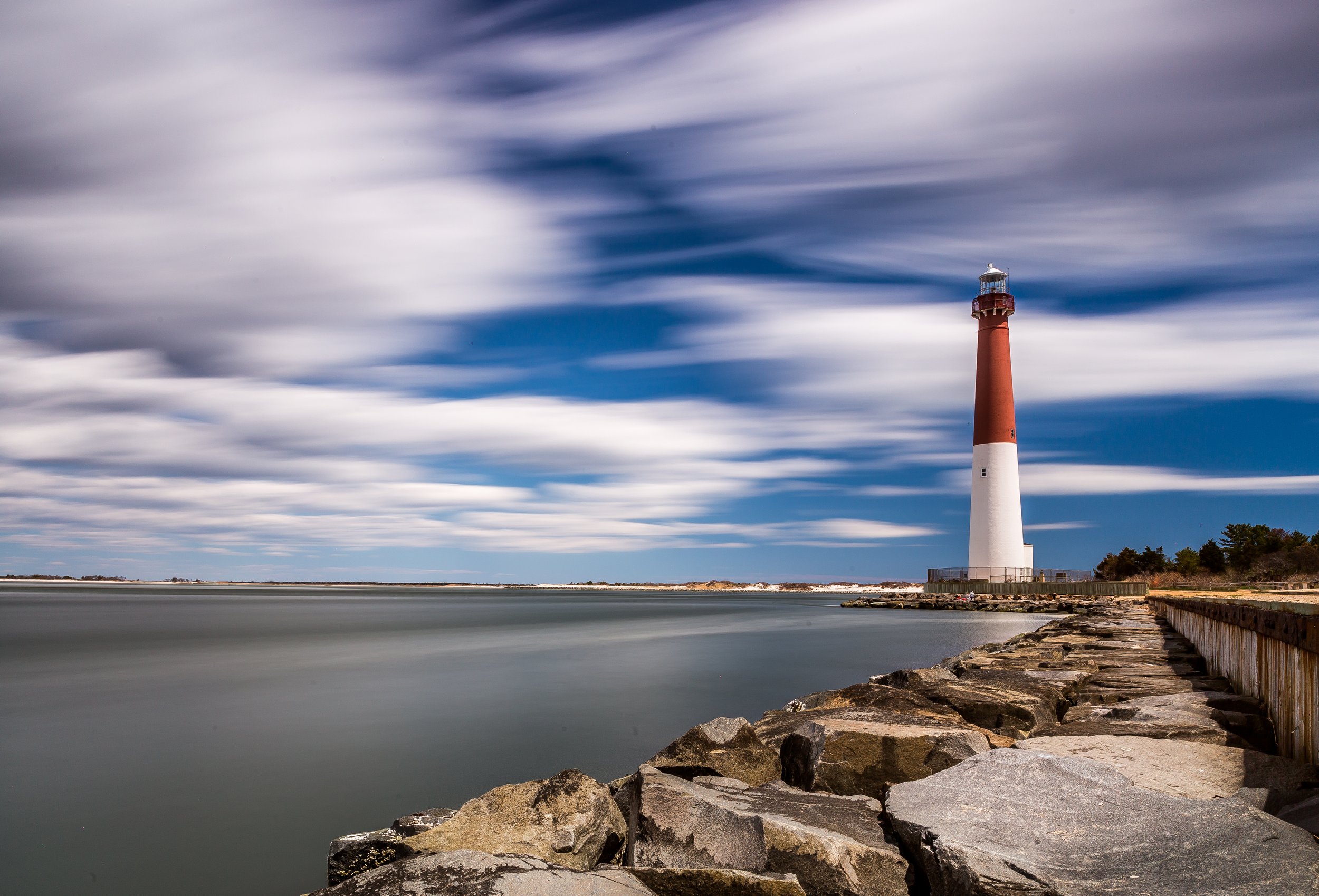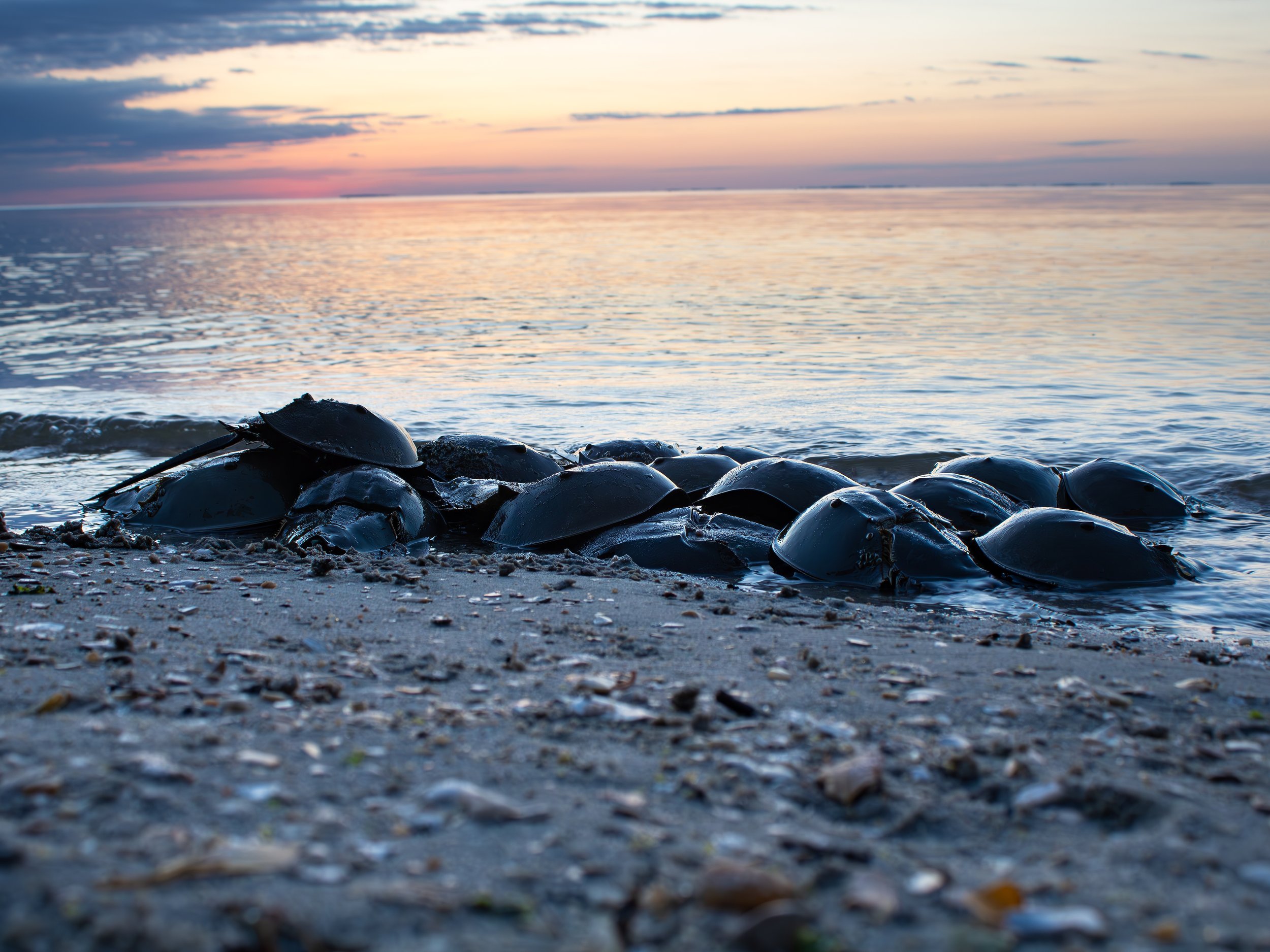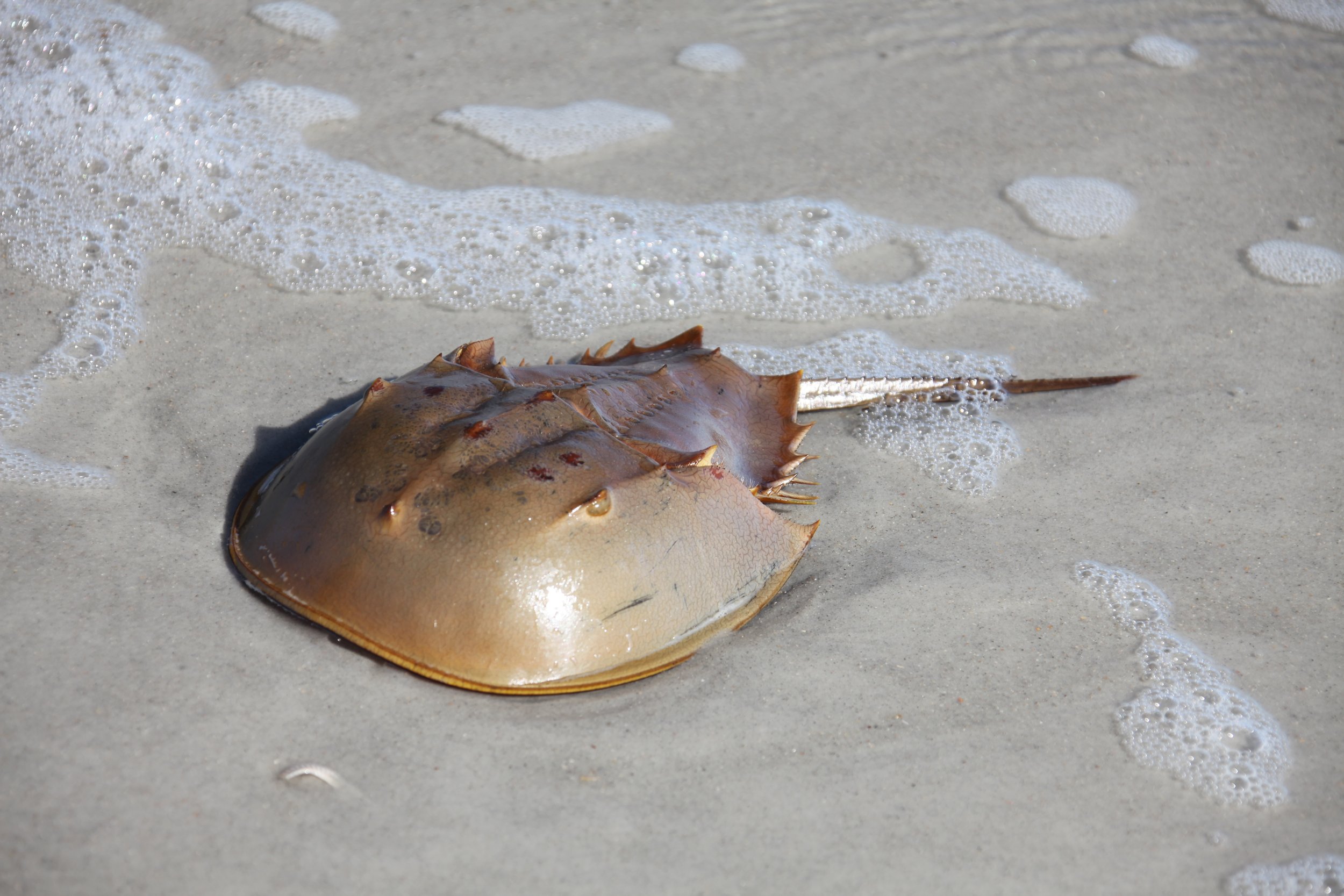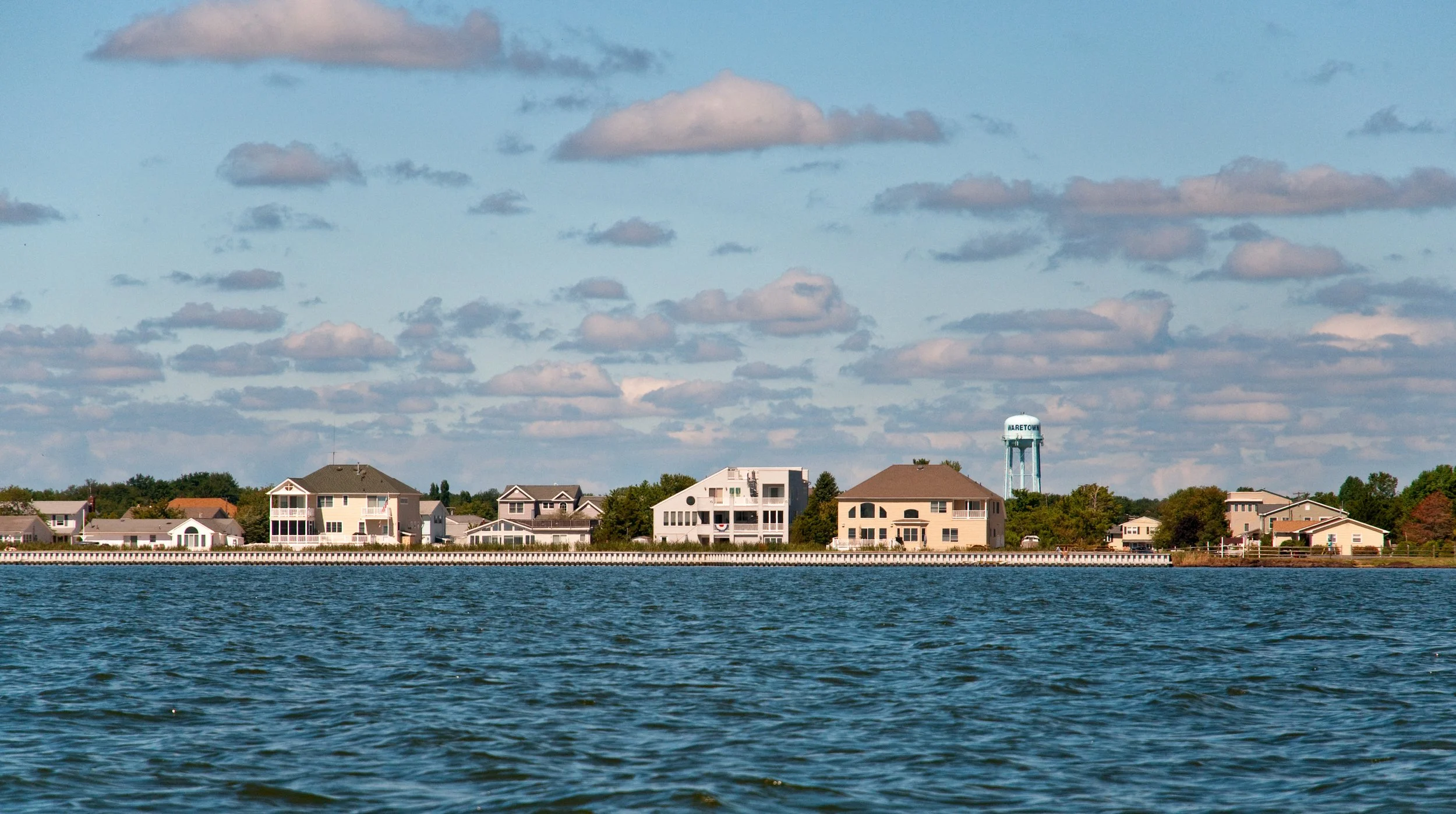
Horseshoe Crab Monitoring in Barnegat Bay, NJ
Save Coastal Wildlife will be conducting surveys of spawning horseshoe crabs around Barnegat Bay starting in spring 2025. This project is in collaboration with Montclair University, as well as the Fiends of Island Beach State Park and New Jersey State Park staff.
At Island Beach State Park in New Jersey, Save Coastal Wildlife will work to train community science volunteers with the Friends of Island Beach State Park in the spring to count adult horseshoe crabs spawning on and around the new and full moons around high tide.
The data collected during these surveys will be submitted to the State of New Jersey, Fish and Wildlife Division. The information will help to fill a gap in horseshoe crab knowledge in New Jersey, as extensive monitoring activities exist in Delaware Bay, New York Harbor, including Sandy Hook Bay and Raritan Bay, and Shark River, but not in Barnegat Bay.
Volunteer monitoring activities will take place at Island Beach State Park along the extensive shoreline of Barnegat Bay. Save Coastal Wildlife and volunteers with Friends of Island Beach State Park will be seeking suitable nesting areas for horseshoe crabs. If horseshoe crab activity is found, these areas will be monitored yearly for their productivity.
If you are interested in being a volunteer for this project, please contact Friends of Island Beach State Park.
Aerial Drone image looking south towards the Barnegat Inlet at New Jersey Island Beach State Park between the Atlantic Ocean and Barnegat Bay.
2025 Monitoring Dates & Times
1. Saturday, April 26 starting at 7pm
2. Sunday, May 11 starting at 11am (Mother’s Day)
3. Wednesday, May 28 starting at 12pm
4. Thursday, June 12 starting at 6:30pm
5. Thursday, June 26 starting at 1:00pm
Meeting Location: Tice’s Shoal Parking Area (Lot 6 & 7) at Island Beach State Park.
Bulkheads, which are hardened shoreline structures, can significantly impede horseshoe crab spawning by physically blocking horseshoe crabs from reaching the intertidal zones where they lay their eggs. In addition, bulkheads can increase wave energy in spawning areas, making it more difficult for horseshoe crabs to spawn successfully.
Barnegat Bay Is a Challenging Place for Horseshoe Crabs to Mate & Lay Eggs.
Barnegat Bay is a unique estuarine environment in New Jersey, characterized by its shallow depth, narrow width, and limited number of outlets, primarily through the Barnegat Inlet. It's a 43-mile-long lagoon-estuary protected by a system of barrier beaches, wetlands, and dunes. The bay's shallow nature and limited flushing, coupled with its proximity to developed areas, make it susceptible to nutrient loading and water pollution.
The limited number of outlets, primarily at the approximately 300-foot wide Barnegat Inlet, means this busy entrance is used by horseshoe crabs to enter the estuary from their overwinter habitat in the ocean. They share this entrance with the many recreational and commercial boats that are active in the spring.
Once in the Barnegat Bay estuary, horseshoe crabs find a lack of available nesting beaches. Although the southern end of Barnegat Bay is rich in coastal wetlands, particularly salt marshes, this is not ideal nesting habitat. Horseshoe crabs typically need wide, sandy beaches to nest and lay eggs. Female horseshoe crabs prefer sandy beaches in bays and coves that are protected from strong wave action, where the sand is porous and well-oxygenated. This allows the eggs to develop properly in the sand.
Farther north in Barnegat Bay, the coastline is highly developed with bulkheads, seawalls, and other forms of human development. Bulkheads, seawalls, and other hardened structures on the shoreline can reduce the availability of the estuarine beach habitat to horseshoe crabs that need an area for spawning. Various man-made structures can block access to spawning beaches, eliminate sandy beach habitat, or even trap and strand spawning crabs.
Barnegat Bay has extensive coastal wetlands, including salt marshes, which are characteristic of the region. Although tidal wetlands offer numerous benefits, including flood protection, water purification, erosion control, and support for diverse ecosystems, wildlife and fisheries, tidal wetlands are not ideal habitat to support a robust population of horseshoe crabs.
Female horseshoe crabs require wide sandy beaches to allow the crabs to crawl up onto the shore to lay their eggs, which they do during high tides. Horseshoe crabs also prefer coarse sand over fine sand because it allows for better air circulation around the developing eggs, preventing suffocation.
The loss of suitable spawning habitat can force crabs to spawn in suboptimal areas, which may reduce the success of egg development.





